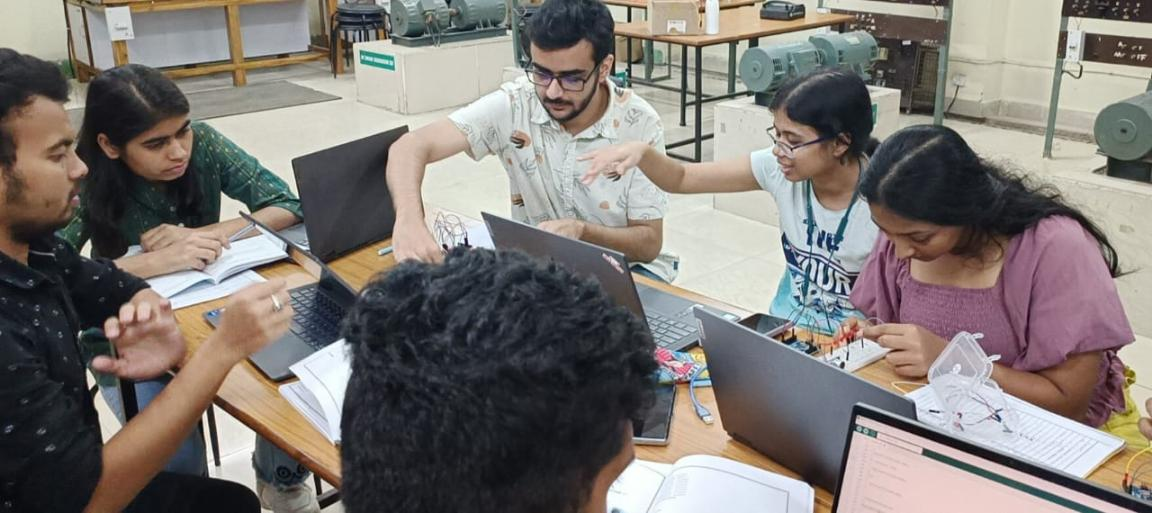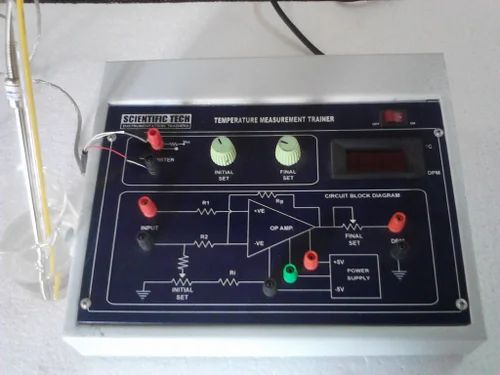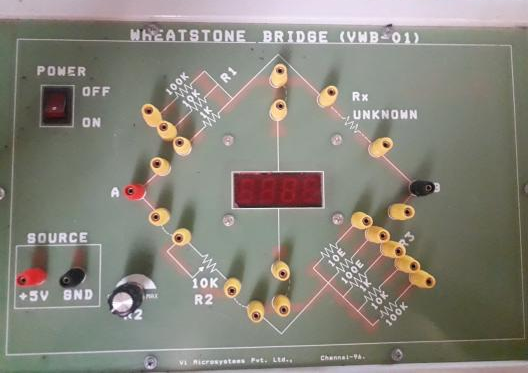Electrical Measurement & Sensor Laboratory (EMS)
Electrical Measurement & Sensor Laboratory, SOEE, KIIT was developed to facilitate Undergraduate Students with Applications of Measuring Instruments and Different Sensors through real time experiments. This Laboratory helps the students to measure the different electrical as well as nonelectrical parameters which can be used for Artificial Intelligence as well as IOT based project.
Main focused areas of Laboratory are Measurement of electric circuit constants using Bridge Methods, Three phase Reactive Power Measurement, Current and Potential Transformers in Electrical Circuits, Use of Transducers like RTD, LVDT etc. and Hands on experience with Sensors associated by Arduino in real time applications. The objective of Laboratory is to enable students for calibrating different electrical quantities by using conventional methods as well as advanced digital method. Additionally students will be familiarized with several measuring instruments, transducers, sensors and their applications and will also be capable to fetch the sensory data which can be useful for Artificial Intelligence as well as IOT based project.
DC & AC Bridges, Resistance Temperature Detector (RTD), Linear Variable Differential Transformer (LVDT), Current and Potential Transformer, Different Sensors, Arduino
| Faculty-in- charge | Dr. Shubhasri Kundu (8280311924,shubhasri.kundufel@kiit.ac.in) |
| Technical Assistant-in- charge | Mr. Manoranjan Das (8908510293, manoranjan1035.md@gmail.com) |
DC & AC Bridges 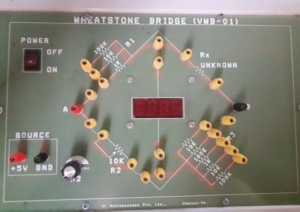 |
Wheatstone Bridge is used to measure unknown resistance by comparing it with known resistance. The Anderson’s Bridge is used to measure the self-inductance of the coil. It enables to measure the inductance of a coil using a standard capacitor and resistors. |
Resistance Temperature Detector (RTD)  |
The main operating characteristics of resistance temperature detector can be studied and temperature vs resistance curve for temperature measurement can be determined experimentally. |
Linear Variable Differential Transformer (LVDT): |
An LVDT is an electromechanical device used to convert mechanical motion or vibrations, specifically rectilinear motion, into a variable electrical current, voltage or electric signals, and the reverse. Actuating mechanisms used primarily for automatic control systems or as mechanical motion sensors in measurement technologies. The classification of electromechanical transducers includes conversion principles or types of output signals. Variation of distance can be measured by variation of output voltage of Linear Variable Differential Transformer. High Accuracy is the main perspective of this instrument. |
Current and Potential Transformer: 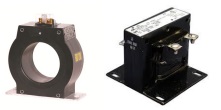 |
Current Transformer : It is used with its primary winding connected in series with line carrying the current to be measured and therefore, the primary current dependant upon the load connected to the system. The secondary winding of the current transformer has larger number of turns, the exact number being determined by the turns ratio. The ammeter or wattmeter current coil are connected directly across the secondary winding terminals. Potential Transformer: Potential Transformers are used to operate voltages, the potential coils of watt-meters and relays from high voltage lines. The primary winding of the transformer is connected across the line carrying the voltage to be measured and the voltage circuit is connected across the secondary winding. |
Different Sensors:  |
Current Sensor: The working principle of the current sensor is; that once current is supplied throughout a circuit or a wire then a voltage drop takes place and also magnetic field will be generated nearby the current-carrying conductor. So, there are two kinds of current sensing direct current sensing & indirect current sensing. Infrared Sensor: Infrared sensors typically use infrared lasers and LEDs with specific infrared wavelengths as sources. Ultrasonic Sensor: Ultrasonic sensors emit short, high-frequency sound pulses at regular intervals. These propagate in the air at the velocity of sound. If they strike an object, then they reflected back as an echo signal to the sensor, which itself computes the distance to the target based on the time span between emitting the signal and receiving the echo. DHT11 Sensor: The DHT-11 is a basic, low-cost digital temperature and humidity sensor. It uses a capacitive humidity sensor and a thermistor to measure the surrounding air, and spits out a digital signal on the data pin (no analog input pins needed). It’s fairly simple to use, but requires careful timing
to grab data. Simply connect the first pin on the left to 3-5V power, the second pin is data input pin and the rightmost pin to the ground. |
Arduino  |
Arduino is an open-source electronics platform based on easy-to-use hardware and software. Arduino boards are able to read inputs – light on a sensor, a finger on a button, or a Twitter message – and turn it into an output – activating a motor, turning on an LED, publishing something online. You can tell your board what to do by sending a set of instructions to the microcontroller on the board. To do so you use the Arduino programming language (based on Wiring), and the Arduino Software (IDE), based on Processing. |
B.Tech Projects in Lab:
- SmartEnergy meter
- Detectionof Gas Leaks using the MQ-2 Gas Sensor
- SmartDigital SchoolBell With Timetable Display
- Soilmoisture monitoring using Arduino


